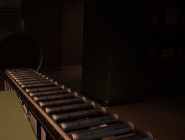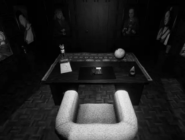Dollmare
Advertisement
Advertisement

Dollmare places the player in the role of a new hire at a doll inspection facility, where the goal is to examine each doll for defects and abnormalities. The job starts off procedural—spot cracks, misalignments, or missing parts—but quickly becomes disturbing. Some dolls move slightly when you’re not looking. Others seem to blink. There’s no action, no chase sequences, and no combat system. But with every shift, a growing sense of wrongness creeps in. The lighting, the silence, the way the factory hums—everything works together to create a heavy, unnatural pressure.
Subtle Horror and Psychological Tension
The game relies entirely on atmosphere and psychological discomfort. You won’t be attacked, but you will feel watched. As shifts progress, tasks begin to feel less like routine and more like survival. Instructions from unseen supervisors become more vague and threatening. Strange protocols must be followed without explanation. Even the layout of the factory changes subtly, making familiar areas feel suddenly foreign. Anomalies aren’t always obvious, and second-guessing yourself becomes part of the experience. The fear doesn’t come from what happens—it comes from what might happen and from the feeling that something is always just out of view.
Unfolding Mystery and Shifting Gameplay
Each playthrough of Dollmare is unpredictable. Some events are randomized or tied to unseen triggers, making the environment evolve differently with each session. One player might find a note behind a doll case, while another may hear a phone ring from an office that wasn’t there before. The unpredictability ensures that every time you play, the story reveals itself in a slightly altered form. Tasks remain the same—inspect, repair, maintain—but the world underneath those actions keeps changing. As the factory’s hidden purpose slowly surfaces, players are left to piece together what happened, why the dolls are wrong, and what role they’ve been pulled into.
Related games
Comments















